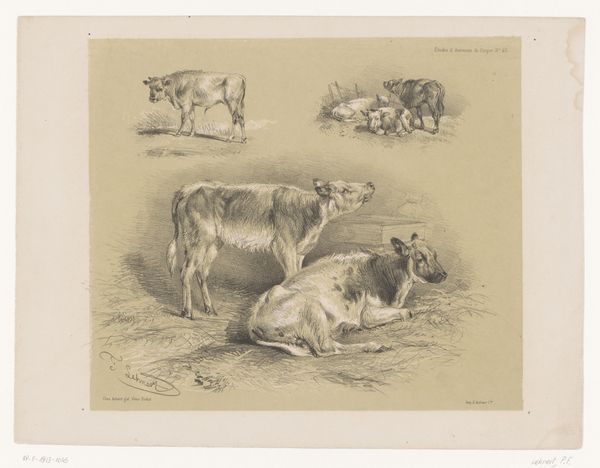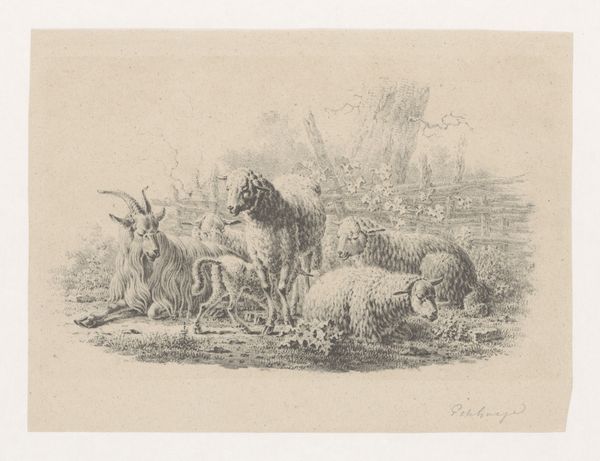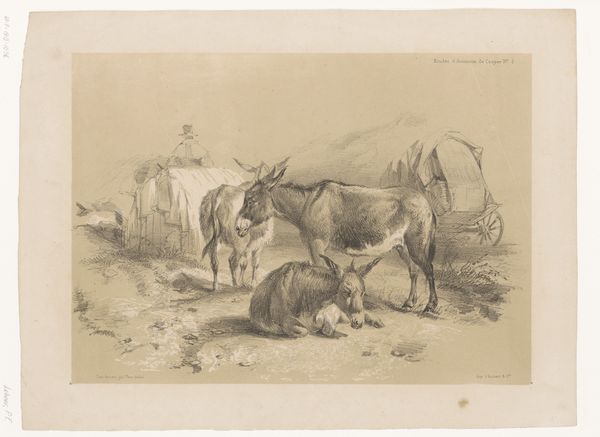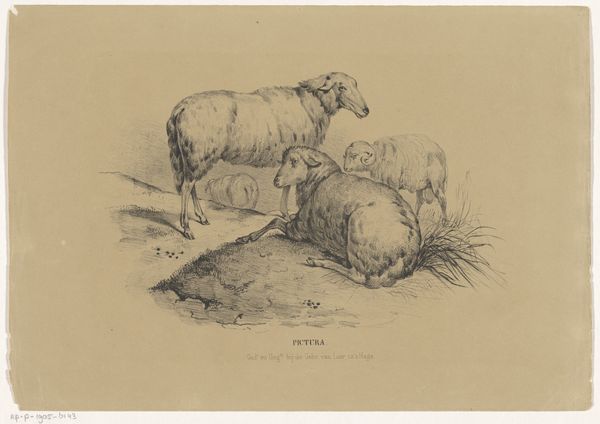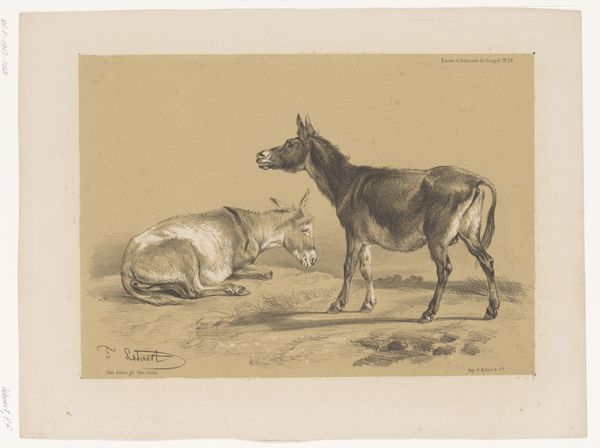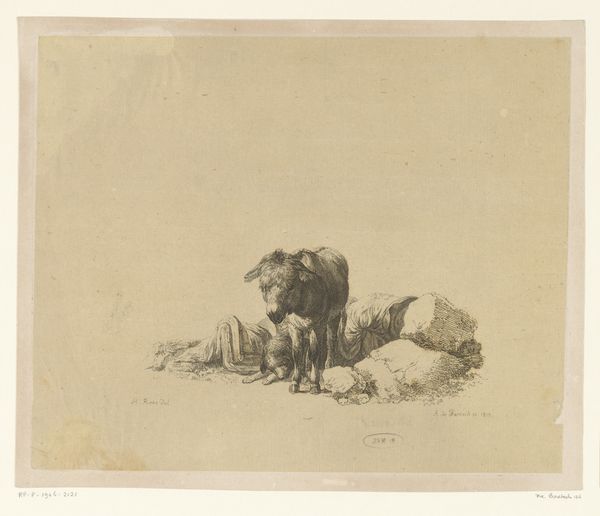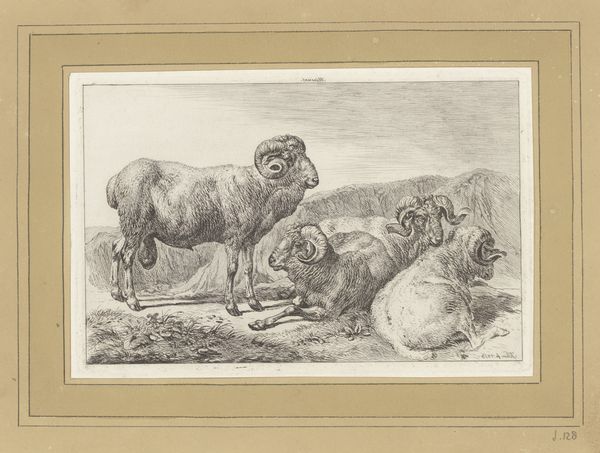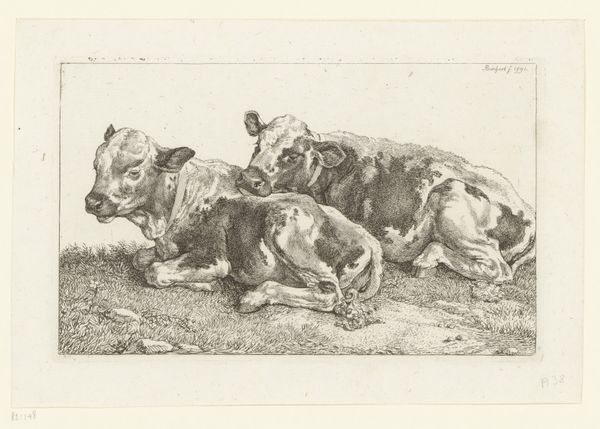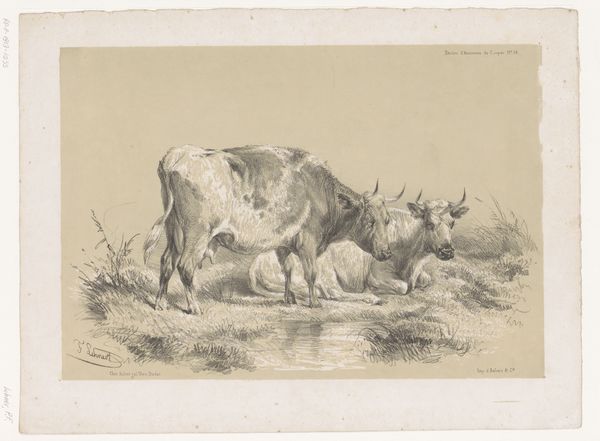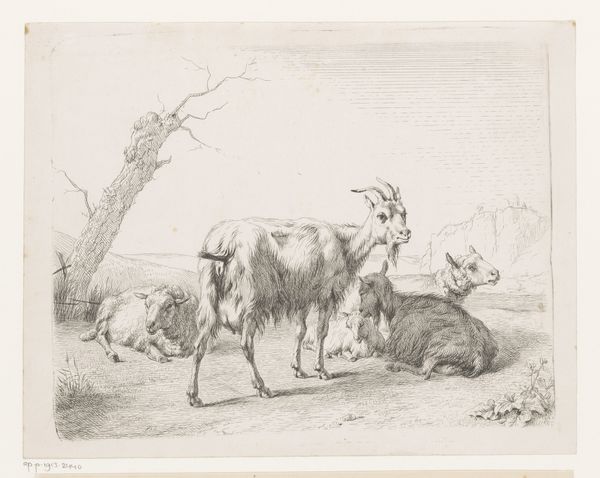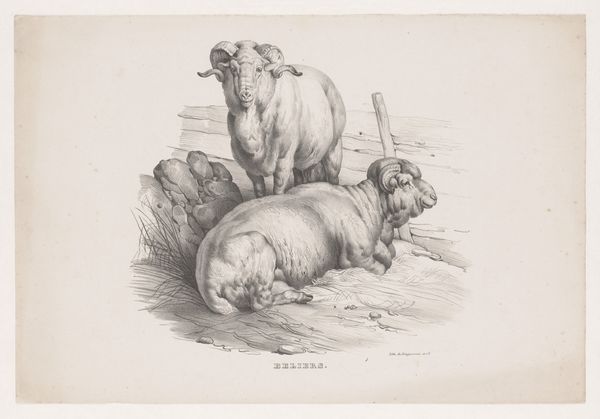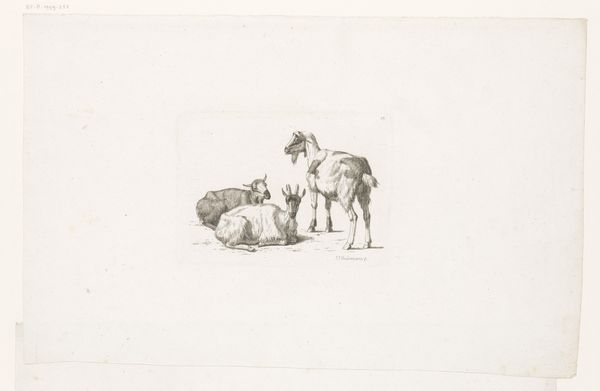
drawing, pencil, charcoal
#
pencil drawn
#
drawing
#
pencil sketch
#
landscape
#
charcoal drawing
#
pencil drawing
#
pencil
#
genre-painting
#
charcoal
#
realism
Dimensions: height 276 mm, width 357 mm
Copyright: Rijks Museum: Open Domain
Editor: Here we have Pierre Frédéric Lehnert's "Study of Two Sheep and a Cow," created between 1838 and 1840. It’s a drawing done in pencil and charcoal, and I find the textures wonderfully captured. It's quite a realistic depiction, making it feel very grounded. What stands out to you? Curator: The work, presented at the Rijksmuseum, invites contemplation of 19th-century realism and its societal implications. It compels me to consider how such pastoral scenes were constructed and consumed within the emerging bourgeois culture. How does Lehnert portray these farm animals? Is it objective observation, or does it subtly reflect certain contemporary ideals? Editor: I see a very direct observation of nature, but your question makes me think: does it romanticize rural life at a time when industrialization was taking hold? It does have a very peaceful, idyllic feel. Curator: Exactly. Consider the broader context. Rapid urbanization altered the relationship between urban populations and the countryside. Did images like this help to create a palatable, perhaps even sanitized, view of rural life for city dwellers? This could reflect the romantic movement too, which focused on nature, the everyday, and emotions. Editor: That’s a really insightful point. I hadn't thought about how the image functions as a cultural object shaping perceptions. Curator: And consider who had access to this kind of art. Were these images accessible to the rural communities themselves or primarily consumed by urban elites? Examining the printmaking industry and its distribution networks provides answers to the image’s purpose. Editor: I see it so differently now, moving from a simple nature scene to a commentary on the cultural values of the time. Thanks for opening my eyes to the context of art creation. Curator: And I appreciate your fresh perspective on its initial impact and artistic qualities. Together, we've unearthed how this seemingly straightforward drawing participates in larger social dialogues of its era.
Comments
No comments
Be the first to comment and join the conversation on the ultimate creative platform.
